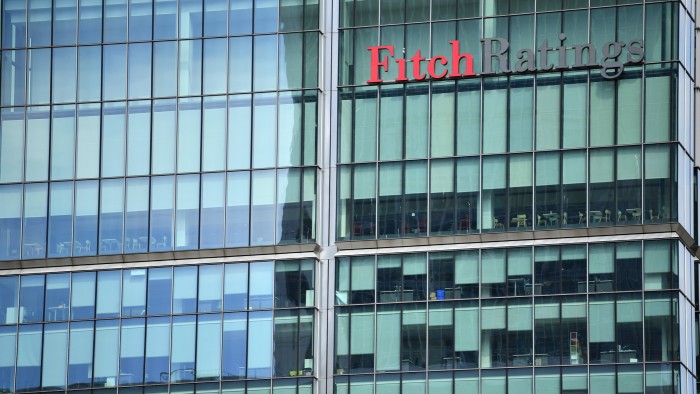Unlock the Editor’s Digest for free
Roula Khalaf, Editor of the FT, selects her favourite stories in this weekly newsletter.
The backup doctor is always in favour of the second opinion. So it is in some ways unsurprising that credit rating agencies are jostling for position on the big business of assessing the riskiness of the multitrillion-dollar private debt market.
That has produced an unusual new bunfight which, while esoteric, raises the question of how creditworthy such sometimes opaque instruments really are. It’s an issue that affects the big private credit firms that originate them and the returns of the insurers that buy them.
Fitch Ratings last week published a report that cited research from an important insurance oversight body, NAIC, questioning the accuracy of ratings published on private credit deals, mostly conducted by a group of less well-known agencies.
The research, which has since been withdrawn, found that NAIC’s own assignment of a credit rating in multiple instances was significantly more penal than what agencies such as Kroll, Egan-Jones and DBRS had assigned. The gap could be the difference between an investment grade and junk rating.
The Fitch report then also happened to broach the idea that private credit deals could be required to get an additional rating from another provider, like say, Fitch. Kroll, one of the agencies which dominates private credit ratings and is relatively young, publicly fired back. The ball is now in the court of the NAIC to either confirm, adjust or reject its previous conclusions.
The dispute is not academic. Private capital firms including Apollo and Brookfield do not just own their own large life insurance businesses. They also “originate” customised private credit instruments that their captive insurers then purchase. Something like $350bn of rated private credit is held by US insurers, the rating almost always coming from the newer providers. That credit rating determines how much capital insurers must hold, which then determines insurers’ return on equity.
The private equity-backed insurance sector has made the centrepiece of its pitch to shareholders that private loans are not inherently riskier, and that their incremental returns come instead from being illiquid. When rating agencies agree, insurers can use these to boost their investment returns in a way that is attractive from a capital perspective.
For its part, the NAIC has, on several topics, grown increasingly worried about private equity-backed life insurers. Rating agencies, while not the most glamorous part of the financial ecosystem, remain essential gatekeepers. Given the role of credit ratings in the financial crisis of 2008, competition among their providers is no bad thing — especially if the result is that they keep tabs on one another.
